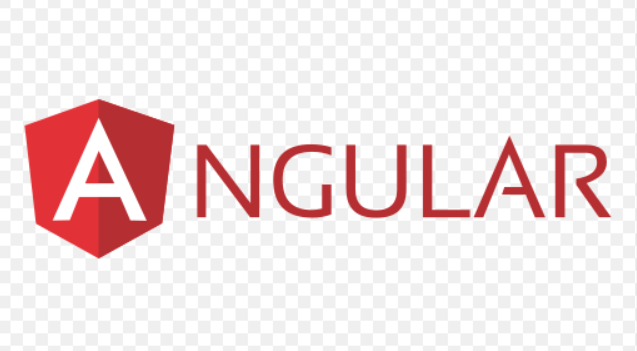Angular
Angular is a web framework that empowers developers to build fast, reliable applications.Maintained by a dedicated team at Google, Angular provides a broad suite of tools, APIs, and libraries to simplify and streamline your development workflow. Angular gives you a solid platform on which to build fast, reliable applications that scale with both the size of your team and the size of your codebase.

Tools Section of Angular:
- TypeScript:
Think of this as a smarter version of JavaScript. Angular uses it by default because it helps catch mistakes early and makes your code easier to manage—like having autocorrect and grammar check while writing a document. - CLI (Command Line Interface):
This is like a super-efficient assistant. Instead of manually setting up everything, you just type a few commands, and it handles the boring setup work—like organizing files, compiling code, and preparing your app to run. You focus on building features, it handles the behind-the-scenes stuff.
Component Section of Angular:
- What is a component?
Imagine building a house out of Lego blocks. Each block is a “component.” In Angular, components are reusable pieces that make up your app—like a login form, a navigation bar, or a product card. - How do you spot one?
If you see a file named something like my-widget.component.ts, that’s a component. It’s like labeling your Lego block so you know what it does. - What’s inside a component?
Each component has three key parts: - Decorator: This tells Angular how to use the component—like giving it a name tag.
- HTML Template: This is what the user sees on the screen—like the design of your Lego block.
- Class (Code): This controls how the component behaves—how it reacts when someone clicks a button, what data it shows, etc.
How does a component behave?
- State (Memory of the Component)
Each component can remember things—like a task name, whether it’s done, or if there are changes pending. This memory is stored inside the component and can change over time. - Methods (Actions the Component Can Perform)
Components can do things—like update a task name, mark something complete, or save changes. These actions are defined inside the component and triggered by user interaction or other logic. - Template (What the User Sees)
Every component has a visual part—what shows up on the screen. This could be a button, a list item, or a form. The template connects the component’s memory to the user interface, so if something changes internally, the screen updates automatically. - Dynamic Content (Live Updates on Screen)
If the component’s data changes—like a task title being edited—the screen reflects that change instantly. Angular handles this behind the scenes so everything stays in sync. - Dynamic Attributes (Changing How Things Behave)
You can control how elements behave based on the component’s state. For example, a button can be disabled if there are unsaved changes. This makes the interface responsive to the current situation.
Use cases or problem statement solved with Angular:
- Single Page Applications (SPAs)
Problem: Traditional websites reload the entire page every time you click a link, making the experience slow and clunky.
Goal: Create a smooth, app-like experience where only parts of the page update instantly—like switching tabs without delay.
Angular’s Role: It builds SPAs that feel fast and fluid, like Gmail or Trello, by loading everything once and updating only what’s needed.
- Enterprise Dashboards & Internal Tools
Problem: Large organizations need complex tools to manage data, employees, finances, and operations—but these tools must be scalable, secure, and easy to maintain.
Goal: Build structured, modular systems that can grow with the company and be maintained by multiple teams.
Angular’s Role: It organizes features into reusable components, supports role-based access, and integrates well with backend APIs—ideal for HR portals, ERP systems, or analytics dashboards.
- Real-Time Applications
Problem: Users expect instant updates—whether it’s a live chat, a stock ticker, or a delivery tracker.
Goal: Build apps that reflect changes immediately without refreshing the page.
Angular’s Role: It works seamlessly with real-time data sources (like WebSockets) to update the UI instantly—great for chat apps, live sports scores, or collaborative tools.
4.E-Commerce Platforms
Problem: Online shoppers want fast search, dynamic filters, and smooth cart updates—but clunky reloads ruin the experience.
Goal: Deliver a responsive, interactive shopping experience with real-time filtering, cart updates, and product previews.
Angular’s Role: It handles dynamic content, user interactions, and complex logic—perfect for building Amazon-like storefronts.
- Progressive Web Apps (PWAs)
Problem: Not everyone wants to download an app, and some users have poor internet connectivity.
Goal: Build websites that behave like mobile apps—fast, installable, and usable offline.
Angular’s Role: It supports PWA features like offline caching, push notifications, and home screen installation—ideal for lightweight mobile experiences.
- Form-Heavy Applications
Problem: Long forms (like job applications or insurance claims) are hard to manage, validate, and submit smoothly.
Goal: Create smart forms that guide users, validate inputs instantly, and handle complex logic.
Angular’s Role: It offers powerful form handling with built-in validation, dynamic fields, and error messaging—great for government portals or onboarding systems.
Pros of Angular:
1.Comprehensive Framework
Angular is a full-fledged framework that includes built-in solutions for routing, HTTP communication, form handling, and state management. This reduces reliance on third-party libraries and ensures consistency across applications. Its opinionated structure enforces best practices and simplifies architectural decisions.
- Two-Way Data Binding
Angular’s two-way data binding synchronizes the model and the view automatically. Changes in the UI are reflected in the component’s state, and vice versa, without manual DOM manipulation. This reduces boilerplate code and enhances developer productivity, especially in form-heavy applications.
- Dependency Injection (DI)
Angular’s DI system promotes modularity and testability by allowing services and dependencies to be injected into components and other services. This design pattern encourages separation of concerns, facilitates mocking during testing, and supports scalable architecture in large applications.
- Component-Based Architecture
Angular applications are built using encapsulated components that manage their own logic, template, and styles. This modular approach improves code reusability, readability, and maintainability. It also enables parallel development and simplifies debugging and testing.
- Strong Community and Ecosystem
Backed by Google, Angular benefits from robust community support, extensive documentation, and a mature ecosystem. Developers have access to a wide range of tutorials, third-party libraries, and tooling, which accelerates development and problem-solving.
- Built-In Testing Tools
Angular integrates seamlessly with testing frameworks like Jasmine and Karma. It supports unit testing, integration testing, and end-to-end testing out of the box. This emphasis on testability ensures higher code quality and easier maintenance.
- Cross-Platform Development
Angular supports Progressive Web Apps (PWAs), native mobile development via NativeScript, and desktop applications using Electron. This versatility allows developers to reuse code and skills across multiple platforms, reducing development time and effort.
- High Performance
Angular’s Ahead-of-Time (AOT) compilation converts TypeScript and HTML into efficient JavaScript during the build process, improving load times and runtime performance. Tree shaking eliminates unused code, reducing bundle size and enhancing speed.
Cons of Angular:
- Steep Learning Curve
Angular’s complexity, including concepts like decorators, dependency injection, RxJS, and TypeScript, can be overwhelming for beginners. Mastering the framework requires understanding its architecture, lifecycle hooks, and reactive programming paradigms.
- Complexity in Small Projects
For simple applications, Angular’s extensive setup and feature set may be excessive. The overhead of configuration, boilerplate code, and strict structure can slow down development and make Angular less suitable for lightweight or rapid prototyping projects.
- Performance Issues in Large Applications
Despite its optimization features, Angular applications can suffer from performance bottlenecks if not carefully managed. Large bundle sizes, excessive change detection cycles, and improper use of services or modules can lead to slow load times and degraded user experience.
- Frequent Updates
Angular’s regular release cycle introduces new features and deprecations, requiring developers to stay updated. While beneficial for long-term evolution, frequent updates can necessitate refactoring, dependency upgrades, and regression testing, increasing maintenance effort.
- Verbose Syntax
Angular’s use of TypeScript, decorators, and extensive HTML templates can result in verbose code. Compared to lighter frameworks like Vue or React, Angular often requires more boilerplate, which can hinder readability and slow down development.
- Limited Flexibility
Angular enforces a specific architectural pattern and coding style. While this promotes consistency, it can restrict customization and innovation. Deviating from Angular’s conventions may lead to conflicts or increased complexity, especially in unconventional use cases.
- Large Bundle Sizes
Angular applications tend to have larger initial bundle sizes due to built-in features and dependencies. This can impact performance on low-bandwidth networks or older devices. Developers must actively optimize using lazy loading, AOT, and tree shaking.
- Dependency on TypeScript
Angular is tightly coupled with TypeScript, which adds static typing and advanced features. While beneficial for large teams, this dependency introduces an additional learning curve for developers unfamiliar with TypeScript, potentially slowing onboarding.
Alternatives to Angular:
1.React
- Developed by Meta (Facebook)
- Library (not a full framework), giving more flexibility
- Uses one-way data binding and virtual DOM for performance
- Ideal for dynamic UIs and component reuse
- Requires external libraries for routing, state management, etc.
- Vue.js
- Lightweight and beginner-friendly
- Combines the best of Angular and React
- Two-way binding like Angular, but simpler syntax
- Great for small to medium projects
- Flexible structure with optional tooling
- Svelte
- Compiles components to efficient JavaScript at build time
- No virtual DOM—faster and smaller bundles
- Minimal boilerplate, very intuitive
- Ideal for performance-critical apps
- Ember.js
- Convention-over-configuration philosophy
- Strong routing and templating system
- Best suited for ambitious web applications
- Less popular today but still maintained
- Backbone.js
- Lightweight and minimal
- Good for simple apps or when you want full control
- Requires manual DOM updates and more boilerplate
ThirdEye Data’s Project Reference Where We Used Angular:
Answering some Frequently asked questions on Angular:
Q1: Is Angular good for beginners?
Not ideal. Angular has a steep learning curve due to its complex architecture, TypeScript dependency, and advanced concepts like dependency injection and RxJS.
Q2: Can Angular be used for mobile apps?
Yes. Angular supports Progressive Web Apps (PWAs) and can be paired with NativeScript or Ionic for native mobile development.
Q3: Is Angular still relevant in 2025?
Absolutely. Backed by Google, Angular continues to receive updates, security patches, and community support. It’s widely used in enterprise-grade applications.
Q4: What language is Angular written in?
TypeScript, a superset of JavaScript that adds static typing and modern features.
Q5: How does Angular compare to React?
Angular is a full framework with built-in solutions, while React is a flexible library. Angular enforces structure; React offers freedom. Angular uses two-way binding; React uses one-way binding.
Q6: Is Angular suitable for small projects?
Not really. Its setup and structure are better suited for medium to large-scale applications. For small apps, Vue or Svelte might be more efficient.
Q7: What kind of apps are best built with Angular?
Enterprise dashboards, admin panels, ERP systems, healthcare portals, and apps requiring modular architecture and long-term maintainability.
Conclusion:
Angular stands as one of the most robust and opinionated frameworks in the modern web development ecosystem. It is not merely a toolkit—it’s a full-fledged platform designed to enforce structure, scalability, and maintainability across complex applications. Its architecture reflects enterprise-grade thinking, where consistency, modularity, and long-term sustainability are prioritized over minimalism or flexibility. Angular is not a lightweight, plug-and-play solution—it’s a strategic framework for building serious, structured applications. For developers and organizations willing to invest in its learning curve and embrace its conventions, Angular offers unmatched architectural integrity, tooling depth, and enterprise readiness. However, for smaller projects or teams seeking flexibility and rapid iteration, alternatives like React, Vue, or Svelte may offer a more agile path.




